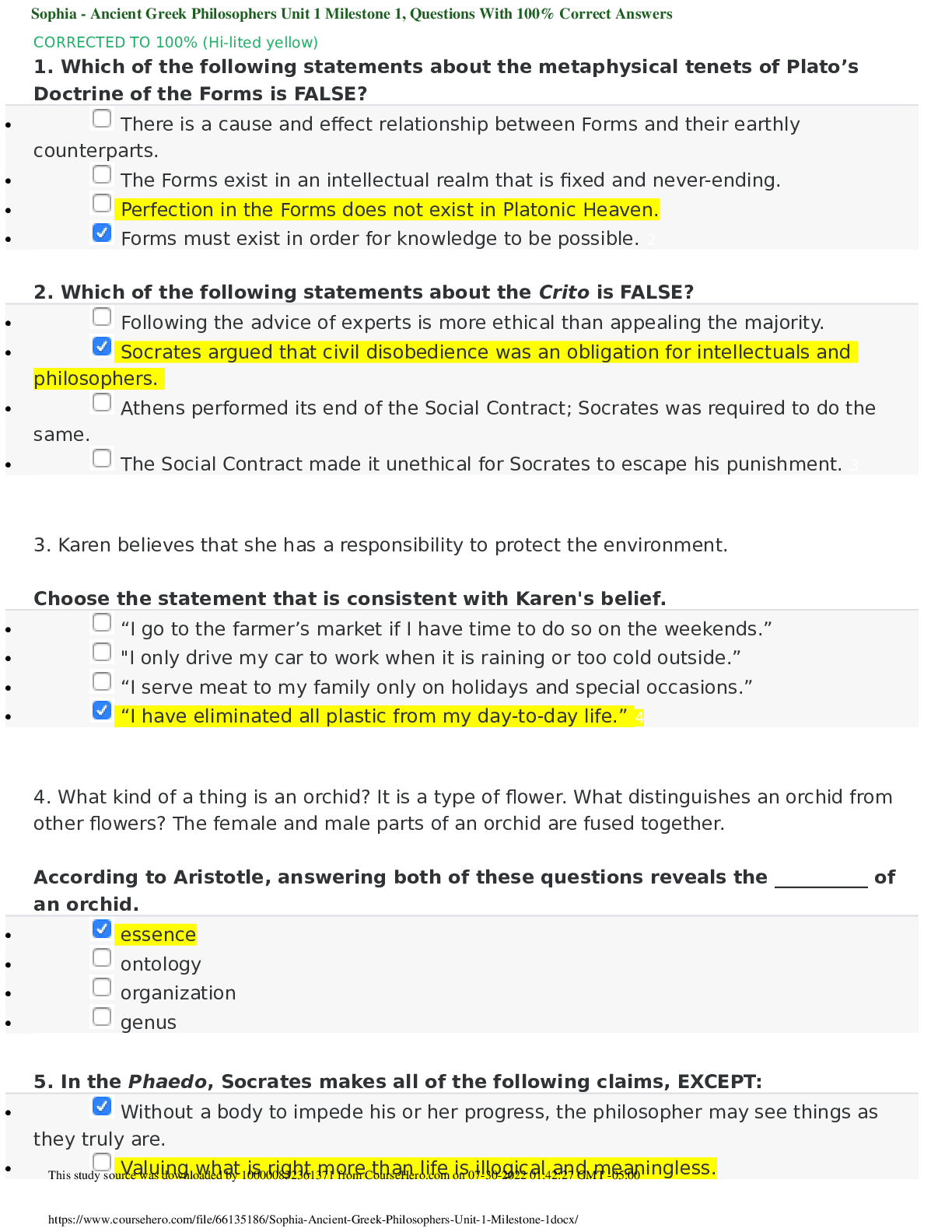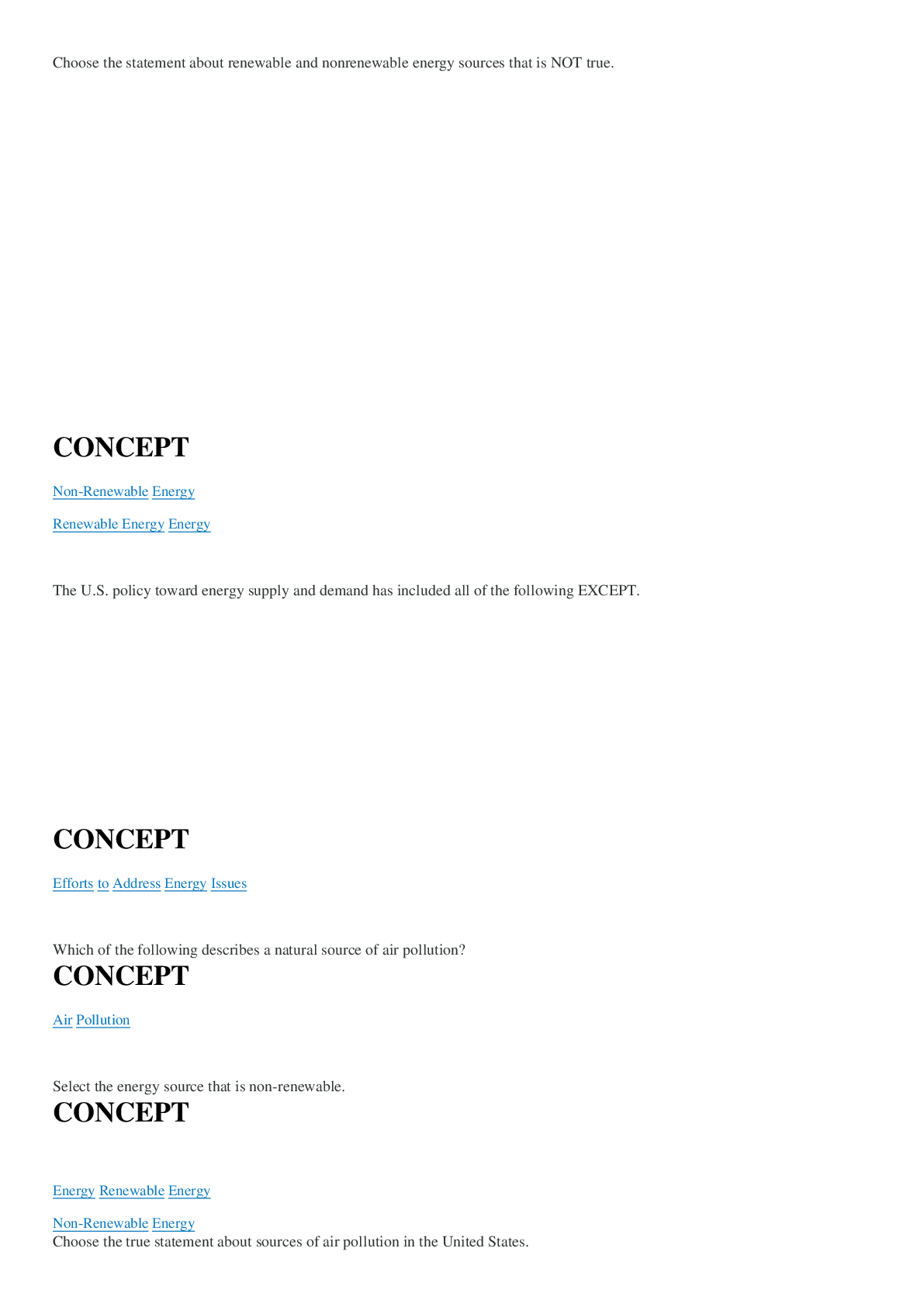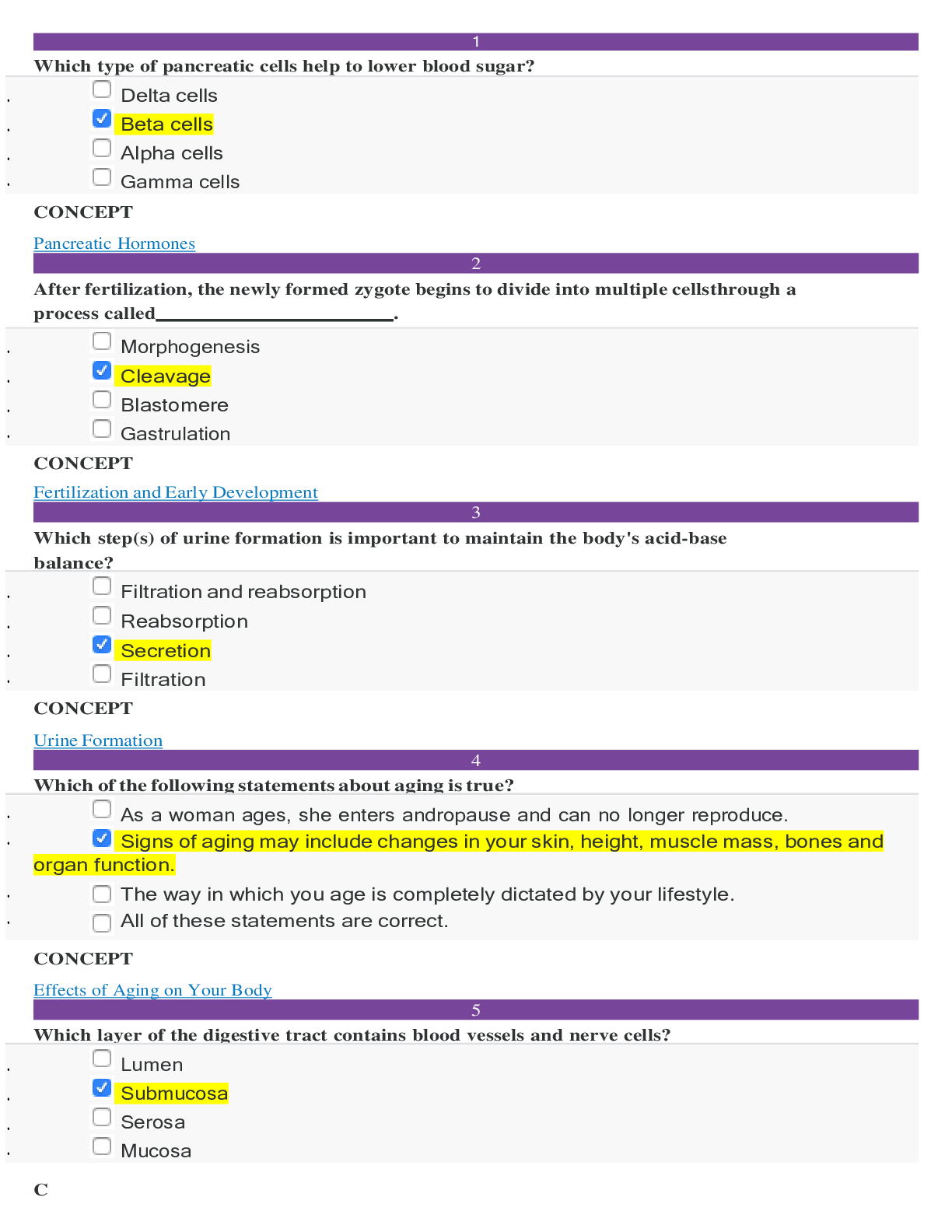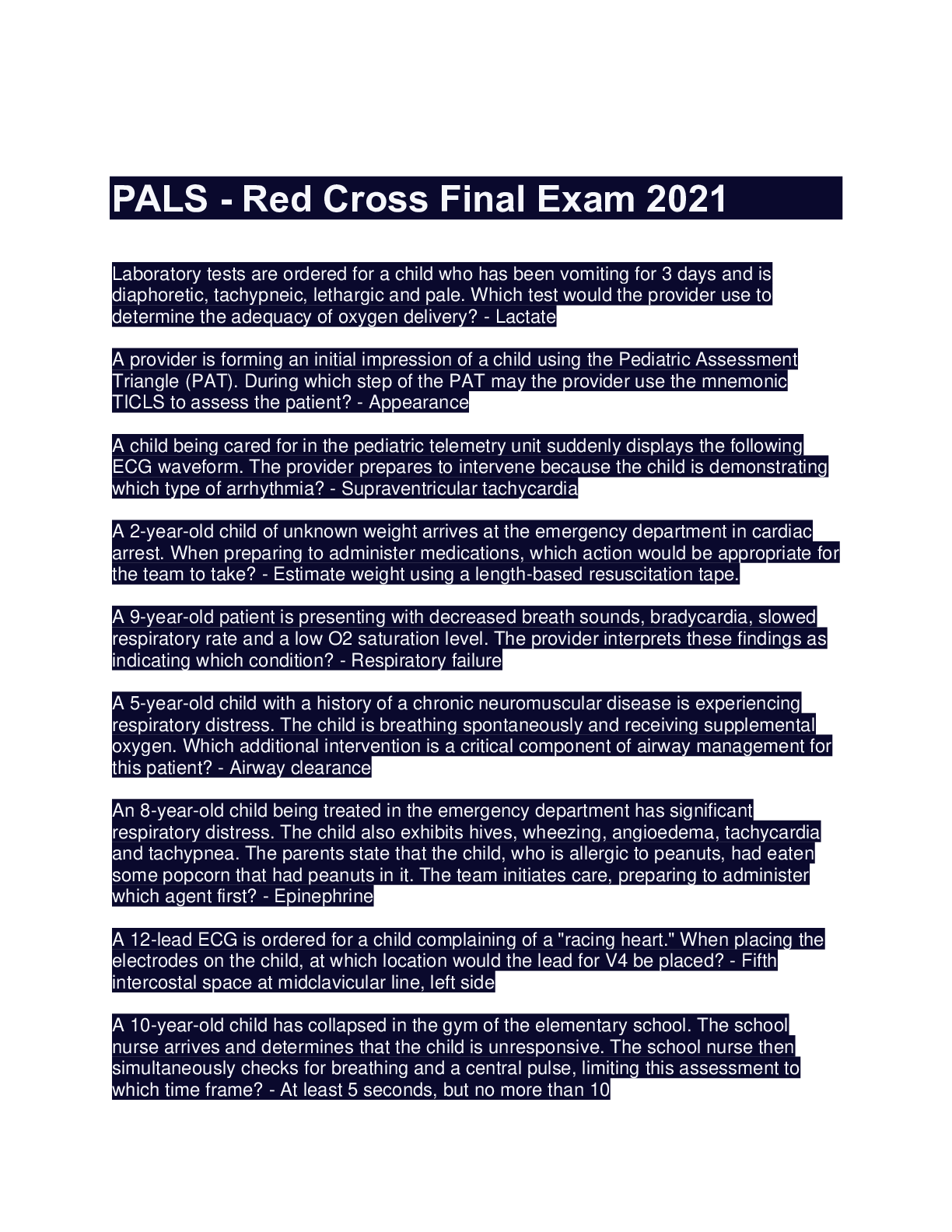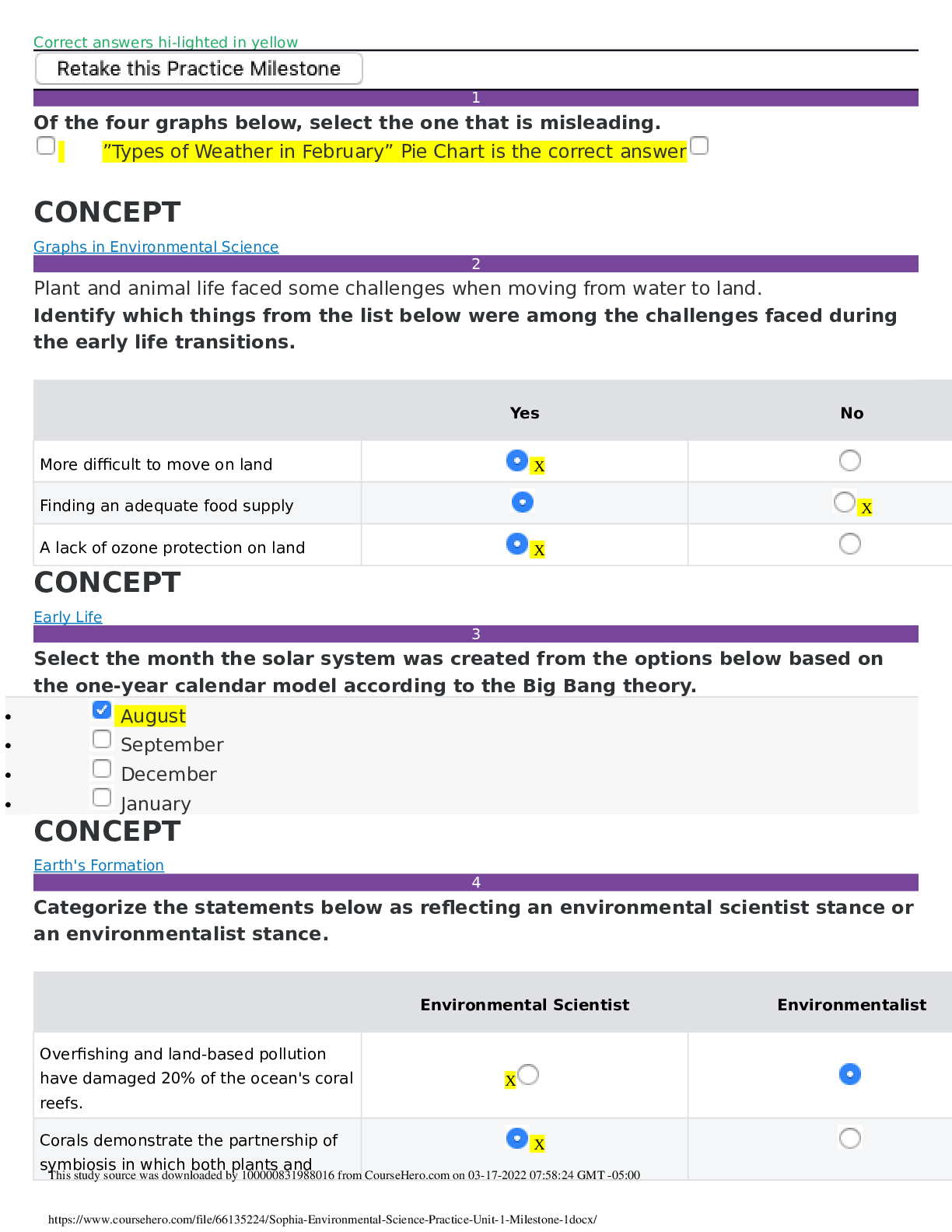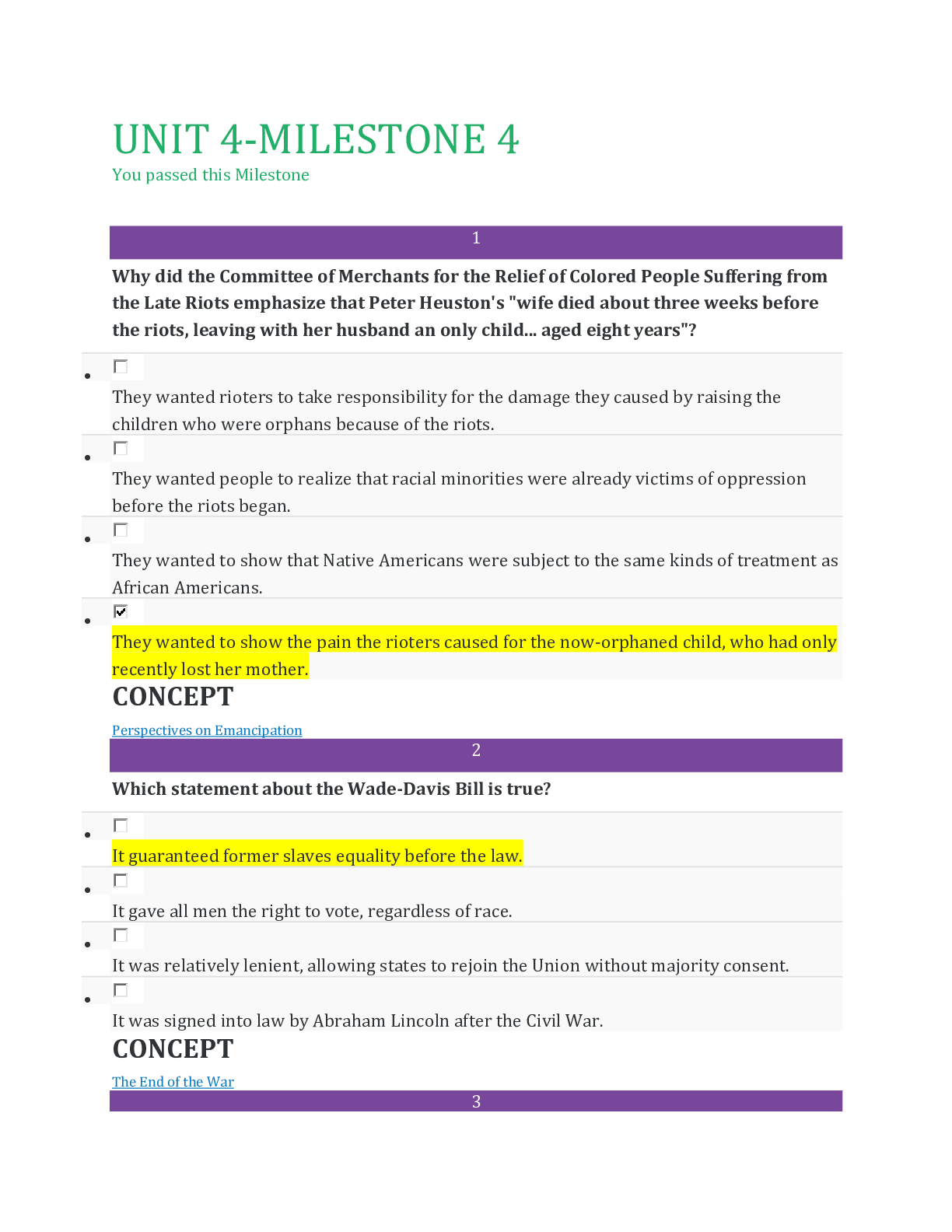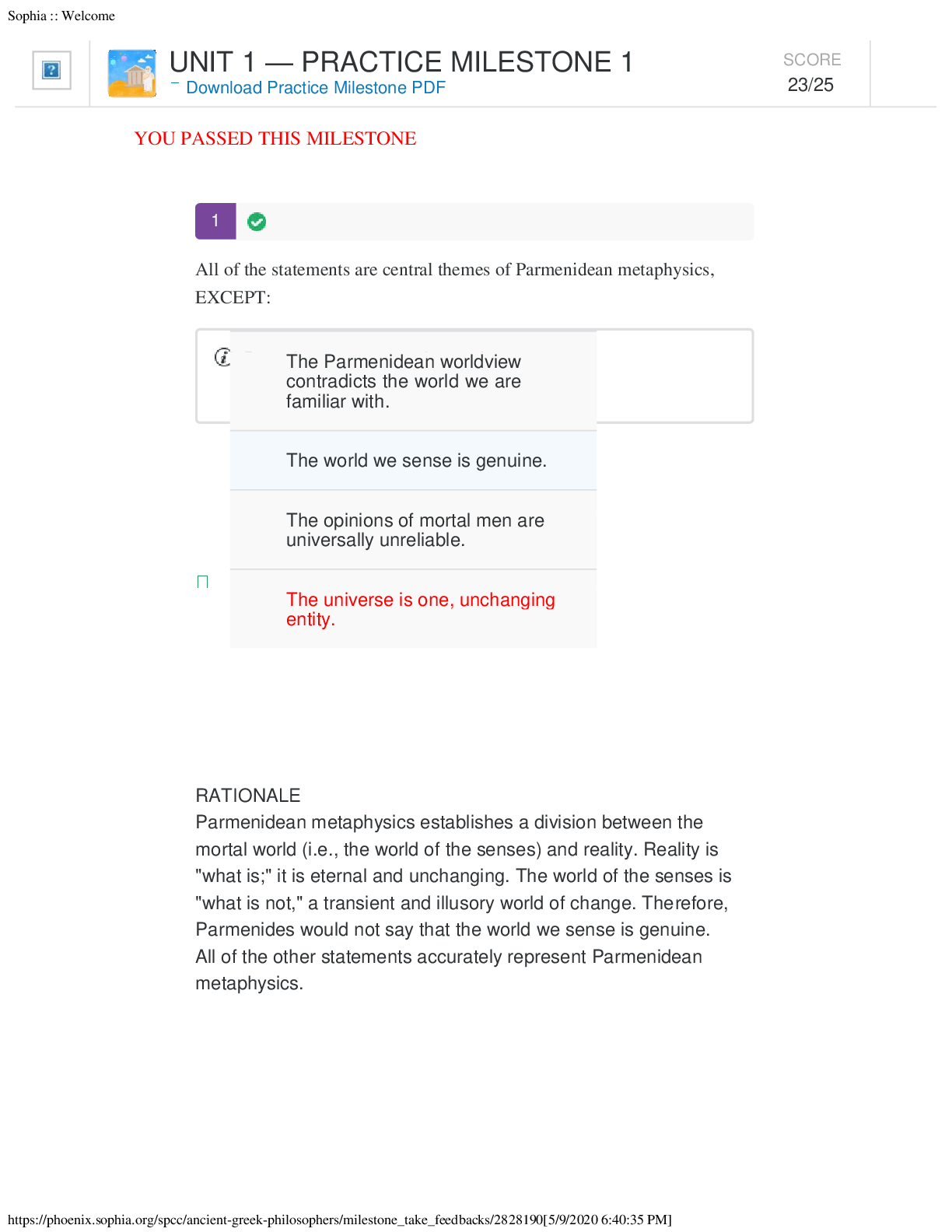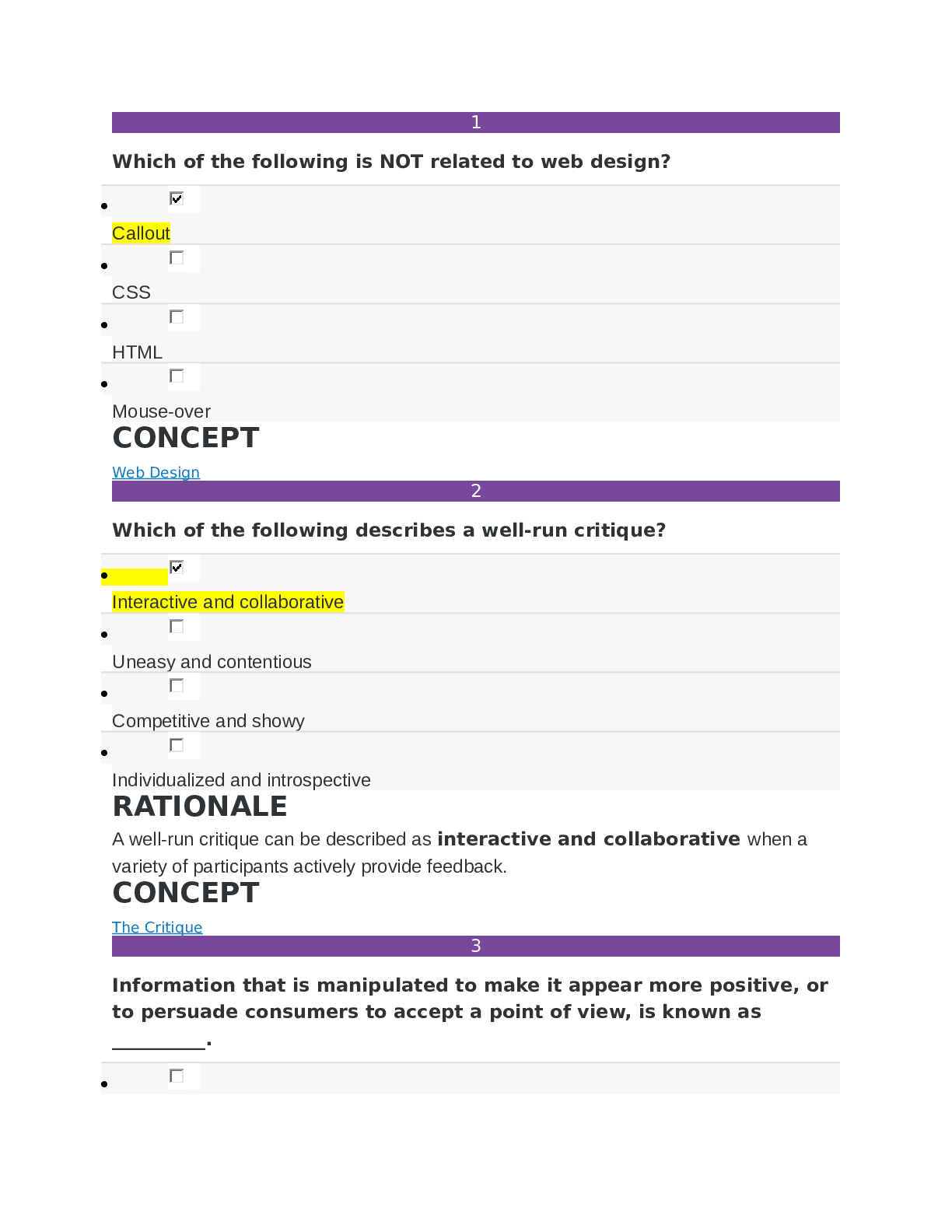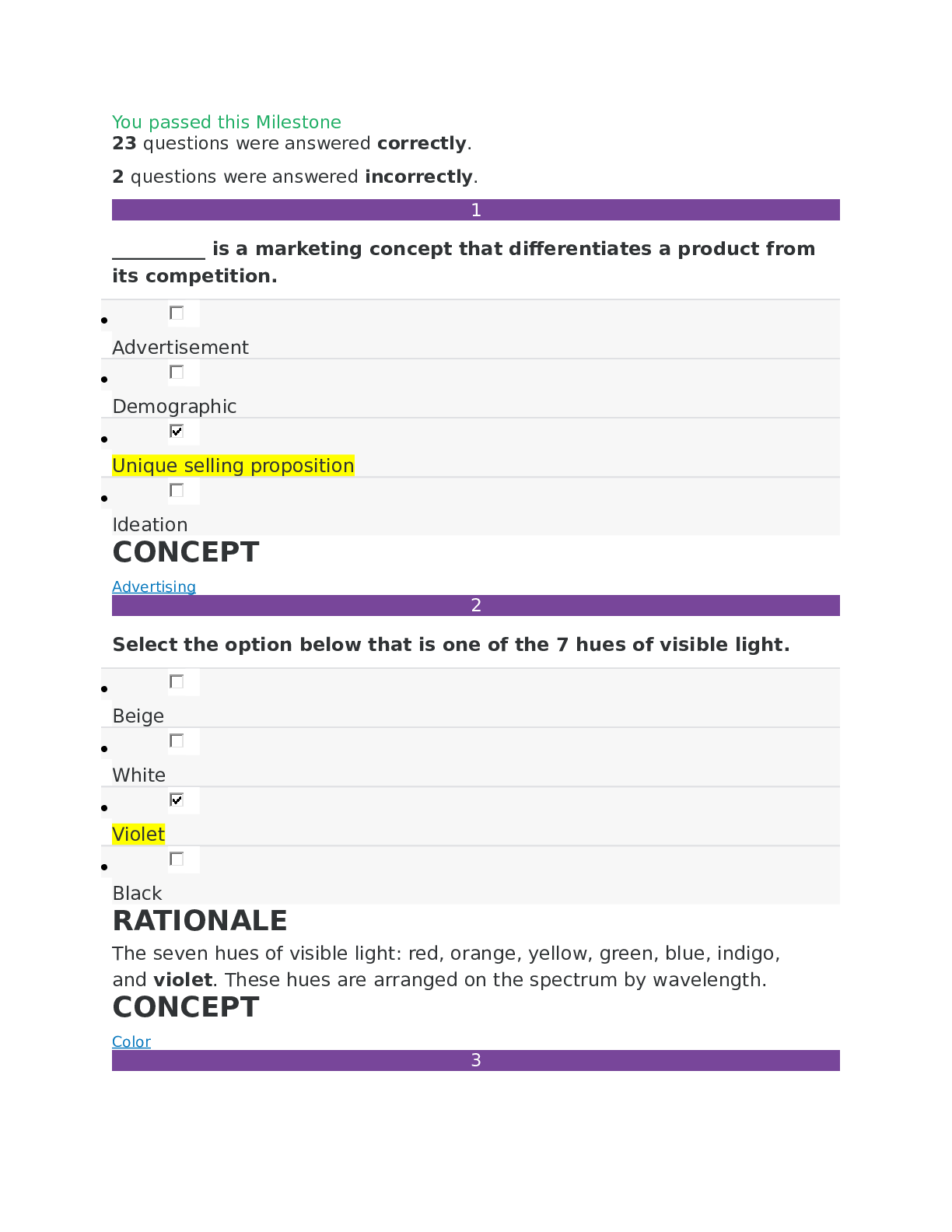Biology > SOPHIA PATHWAY > Sophia_Human_Biology_Practice_Milestone_1 (A GRADE) - Ashford University | Sophia_Human_Biology_Prac (All)
Sophia_Human_Biology_Practice_Milestone_1 (A GRADE) - Ashford University | Sophia_Human_Biology_Practice_Milestone_1 (A GRADE)
Document Content and Description Below
Sophia_Human_Biology_Practice_Milestone_1 (A GRADE) - Ashford University | Sophia_Human_Biology_Practice_Milestone_1 (A GRADE) You passed this Practice Milestone. When you take the actual Mileston... e, you must score 50% or higher to pass. 15 questions were answered correctly. 8 questions were answered incorrectly. 1 Which of the following is part of a nucleotide? ● RNA ● Ribosomes ● Nitrogen base ● Cytosol CONCEPT Nucleic Acids 2 Which of the following statements is a verifiable fact? ● A restaurant's business is better on rainy days. ● Rainy days are somewhat depressing. ● A nearby park is more picturesque in the rain. ● Rainy days are more relaxing. CONCEPT Evaluate Information 3 At what level of protein structure do amino acids form a simple chain? ● Secondary ● Primary● Tertiary ● Quaternary CONCEPT Proteins 4 What is true about the Krebs cycle? ● It does not directly produce any ATP molecules. ● Another name for the Krebs cycle is the coenzyme cycle. ● It occurs in the cell's mitochondria. ● Preparatory steps convert pyruvate from glycolysis into NADH. CONCEPT Krebs Cycle 5 Which of the following statements about enzymes is true? ● A product attaches to an enzyme at the active site to produce a substrate. ● Enzymes are general in nature and each enzyme can participate in a wide variety of chemical reactions in the body. ● Enzymes act to slow down the chemical reactions in the body in order to maintain homeostasis. ● At the end of the process, an enzyme converts a substrate into a different product. CONCEPT Enzymes 6 Which type of fat is usually solid at room temperature? ● Saturated fat ● Trans fat● Unsaturated fat ● Triglyceride CONCEPT Lipids 7 Which of the following describes the nucleus? ● A cell organelle found in eukaryotic cells that houses the DNA and controls activity within the cell ● A structure found within the nucleolus that produces subunits of ribosomes ● A form of uncondensed DNA found within the the cell. ● A condensed form of DNA that occurs when the cell is dividing CONCEPT Nucleus - - - - - - - - - - - -- - - - - - - - - - - - - - - - - - - - -- - - - ● Most cells arise from preexisting cells, but a small minority of cells occur spontaneously.● All organisms are made up of two or more cells. ● The organelles found inside cells are the smallest unit of life. ● An organism is a single living thing, composed of one or more cells. CONCEPT Cell Theory 16 Which of the following is part of the cytoskeleton? ● Introductory tubules ● Intermediate filaments ● Tertiary filaments ● Cytosol CONCEPT Cytoplasm 17 What is the purpose of the endomembrane system? ● To act as a control center for the cell ● To give structure to and regulate movement into and out of the cell ● To synthesize and package proteins and lipids ● To break down carbohydrates and make ATP CONCEPT Endoplasmic Reticulum 18 What role do integrators play in feedback loops to maintain homeostasis? ● Detecting stimuli or changes that occur within the body ● Processing information to determine what response is necessary to maintain homeostasis● Carrying out a particular response, usually determined by the brain, to maintain homeostasis ● Attempting to prevent the body from detecting any stimulus or changes CONCEPT Homeostasis 19 A carbohydrate with one sugar unit is a(n) __________. ● monosaccharide ● oligosaccharide ● disaccharide ● polysaccharide CONCEPT Carbohydrates 20 What is a Golgi body? ● A cell organelle responsible for synthesizing proteins ● A system of organelles that is used to synthesize and package proteins and lipids ● An organelle that packages lipids and proteins to be transported out of the cell ● A membrane-bound sac used to store and protect materials that are transported in the cell CONCEPT Golgi Body 21 Which is a component of cellular respiration? ● The electron transport chain ● Ribosome ● Mitosis● Osmosis CONCEPT Mitochondria 22 What is true about the electron transport chain? ● 64 total ATP are produced by the electron transport chain. ● Very few ATP molecules are produced in this step of cellular respiration. ● ATP is produced as the hydrogen gradient evens out. ● The process occurs in the outer membrane of the mitochondria. CONCEPT Electron Transport Chain 23 Which step of the scientific method involves constructing a proposed explanation of a phenomenon? ● Hypothesis ● Observation ● Conclusion ● Prediction CONCEPT [Show More]
Last updated: 1 year ago
Preview 1 out of 8 pages
 - Ashford University.png)
Reviews( 0 )
Document information
Connected school, study & course
About the document
Uploaded On
Sep 07, 2020
Number of pages
8
Written in
Additional information
This document has been written for:
Uploaded
Sep 07, 2020
Downloads
0
Views
112


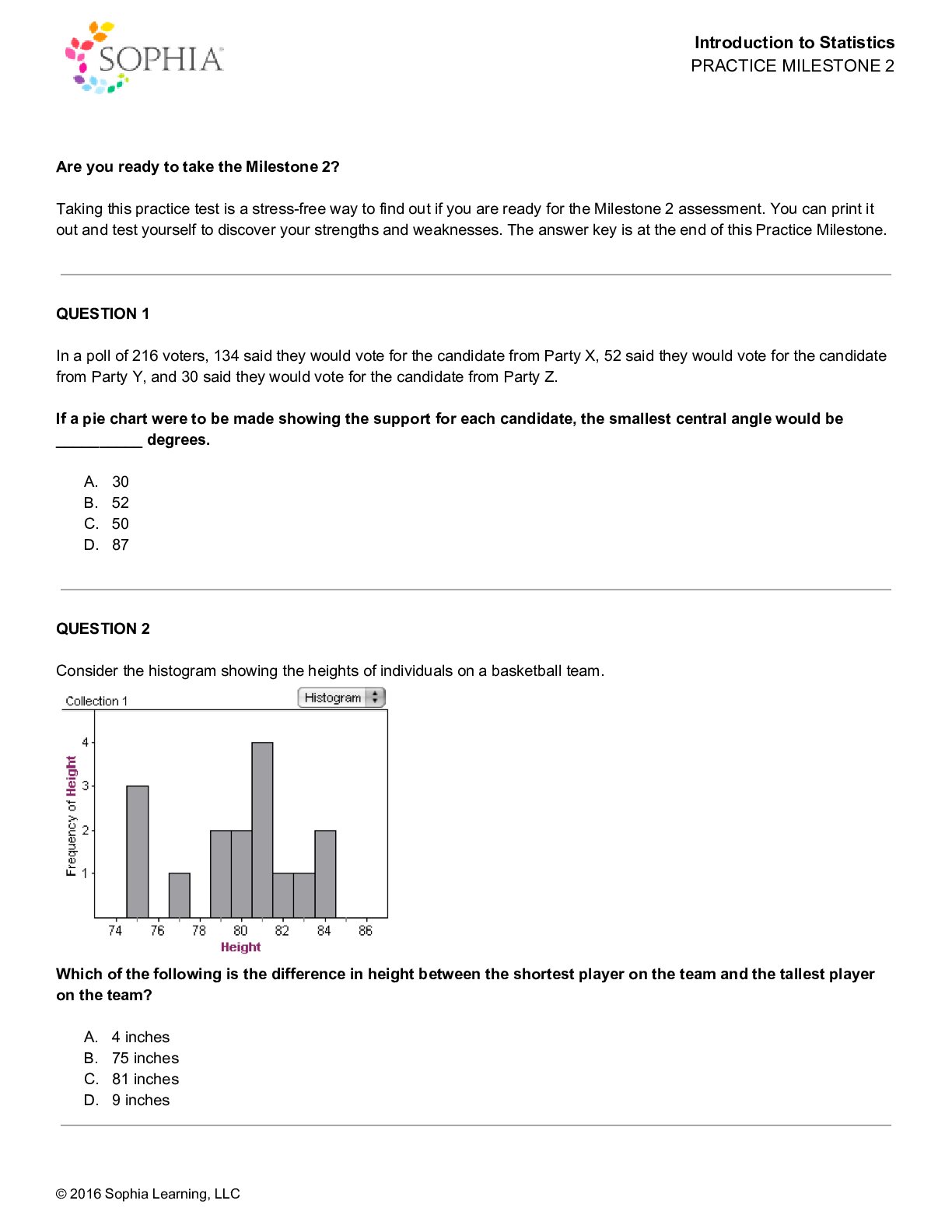
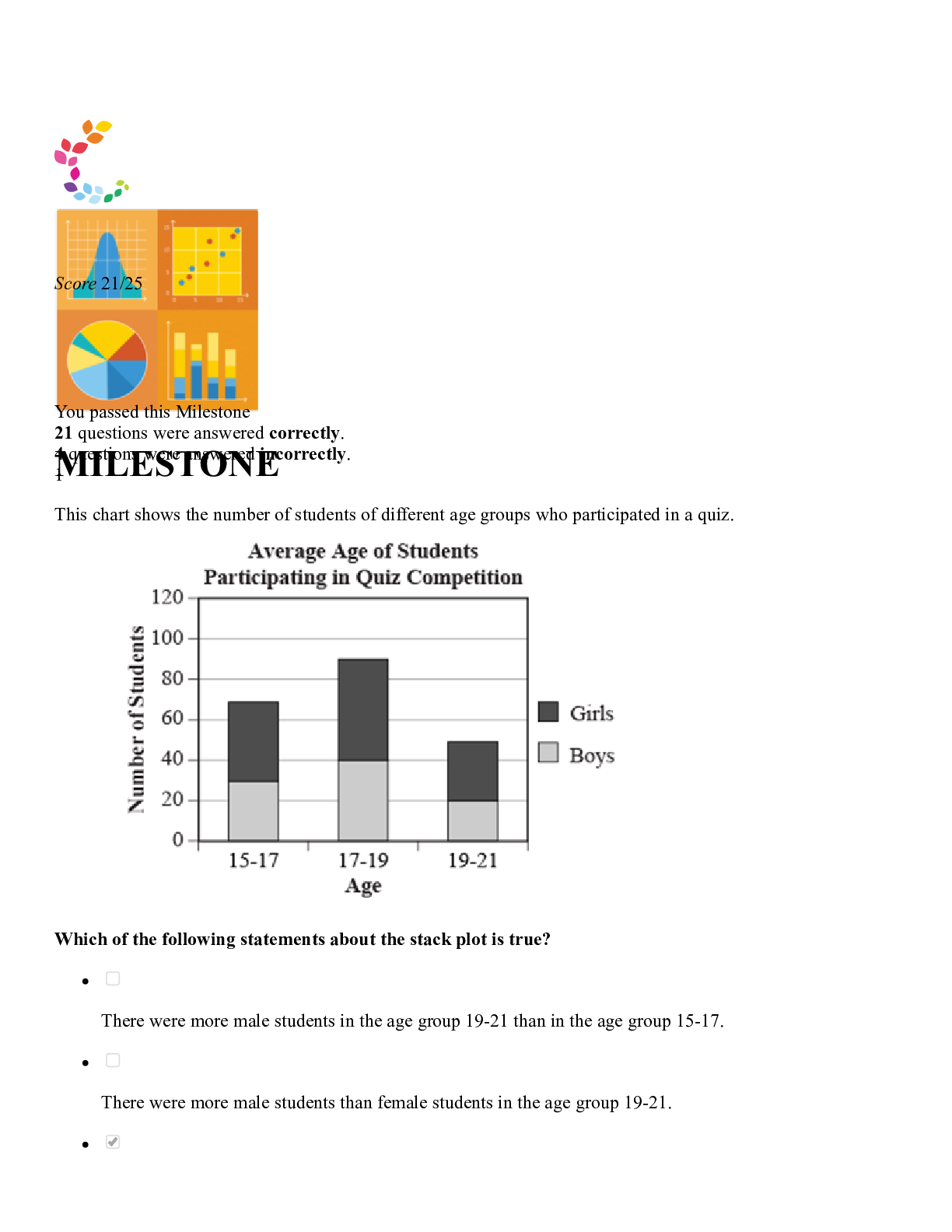


 – University of the People.png)

 – University of Maryland.png)
 – University of the People.png)
 – University of the People.png)
 – University of the People.png)
 - Ashford University.png)
 - Ashford University.png)
 - Ashford University.png)
 - Ashford University.png)
 - Ashford University.png)
